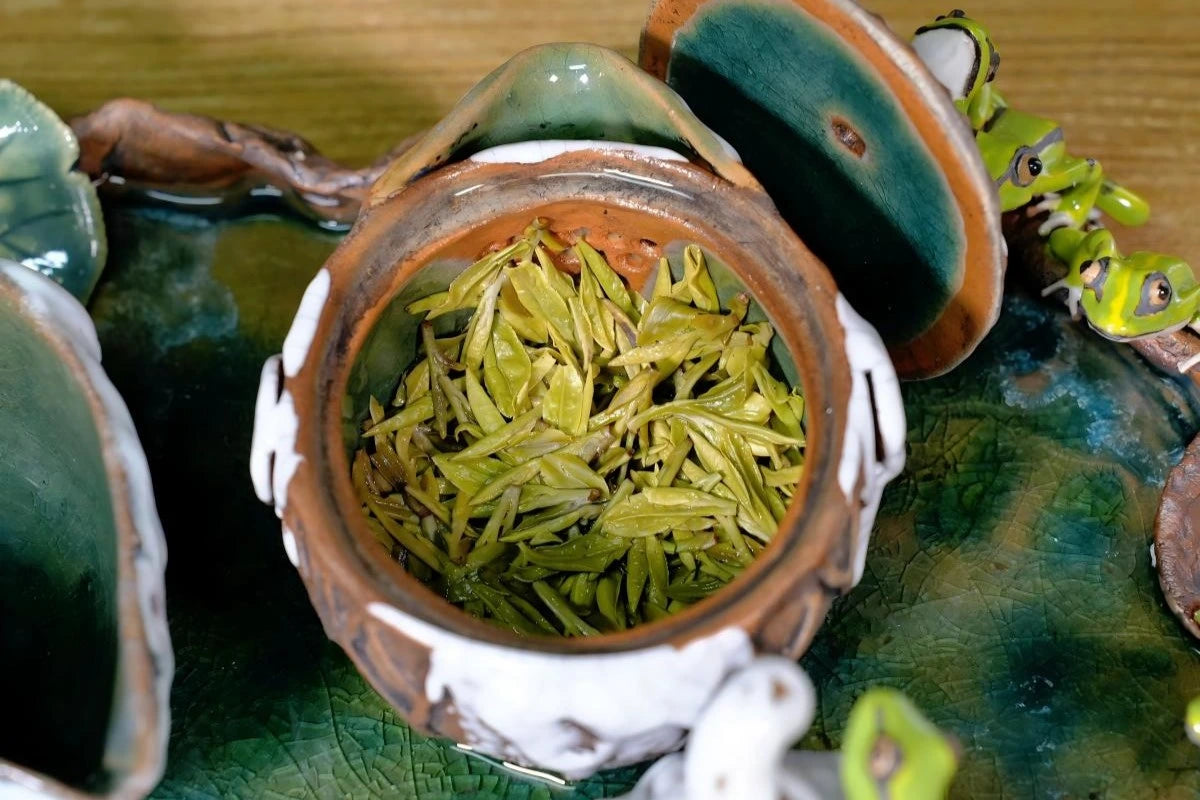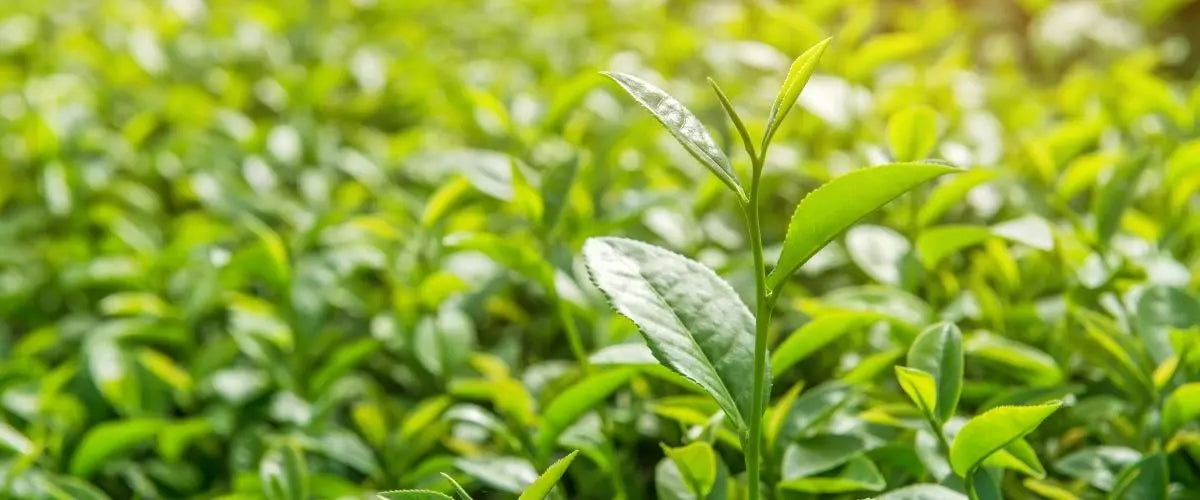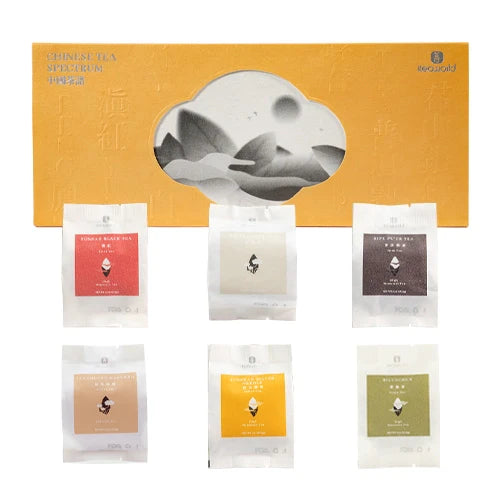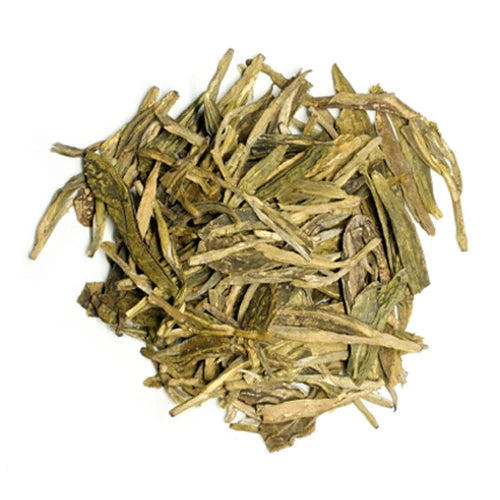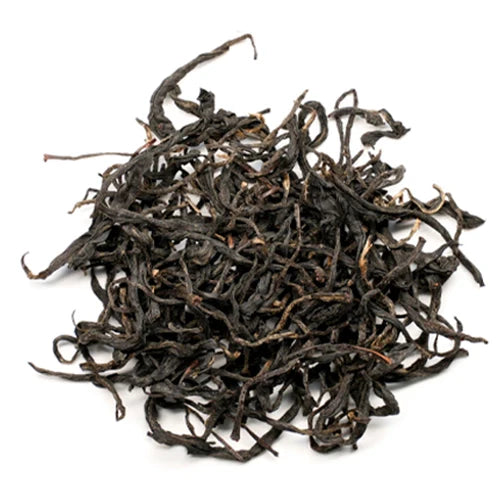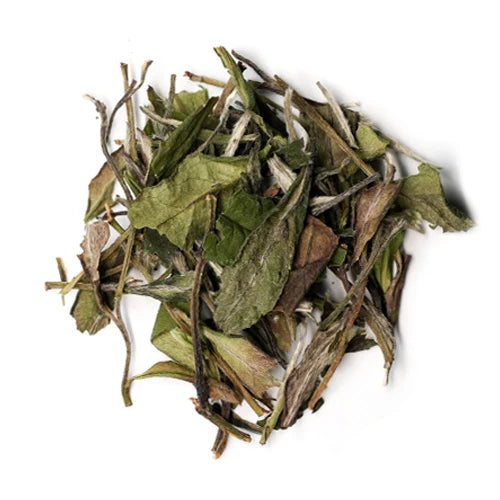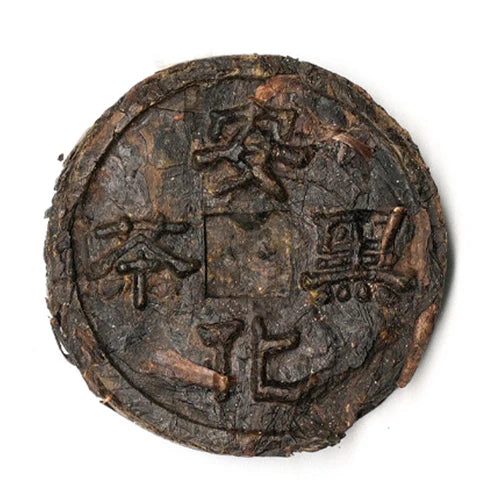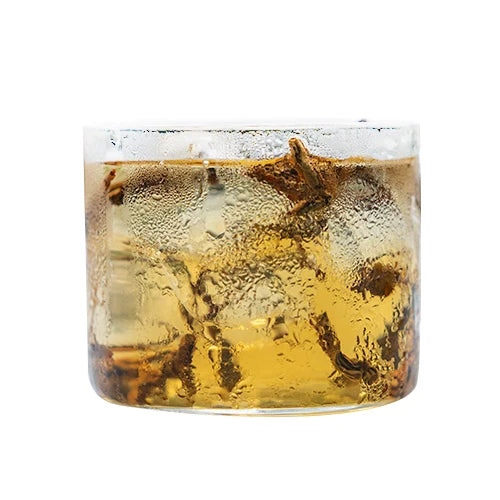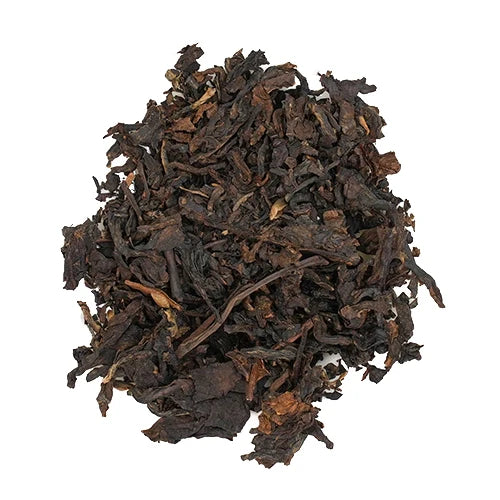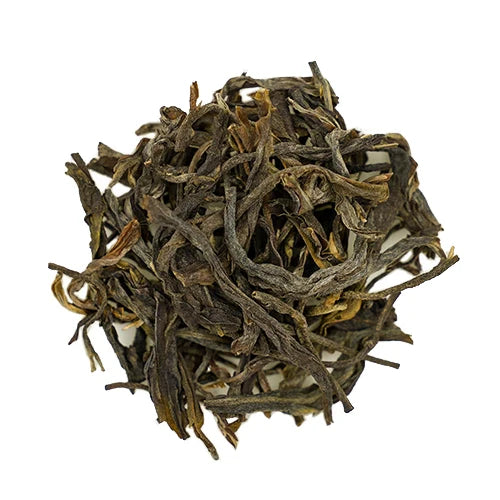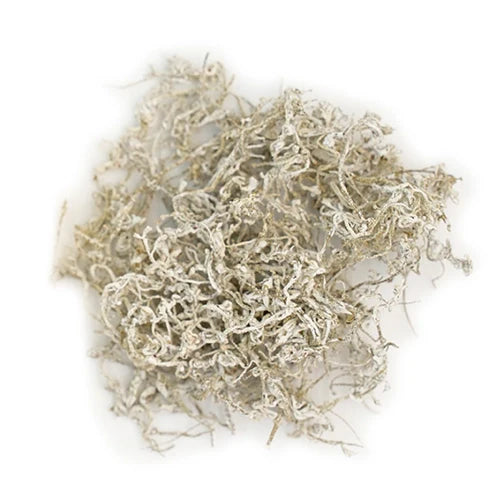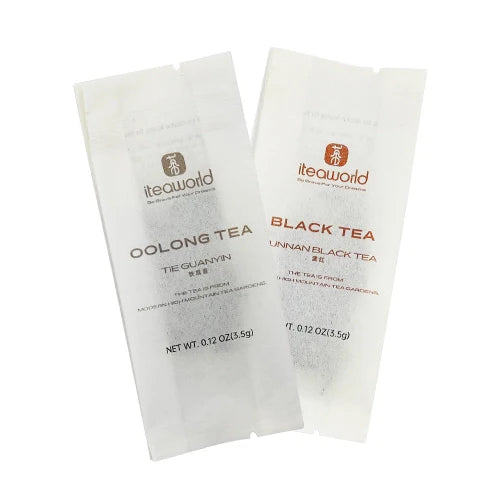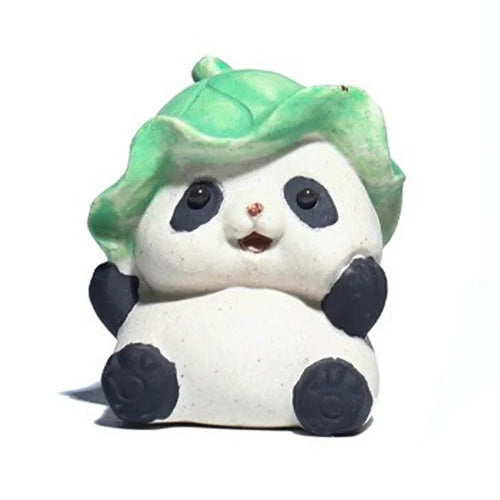Основные этапы приготовления зеленого чая: Сбор : Мы собираем чайные листья в нужное время. Увядание : листья расправляются и теряют часть воды. Уничтожение : предотвращает изменение листьев путем их быстрого нагревания паром или горячей сковородой. Скручивание : листья скручивают или скручивают, чтобы лучше раскрыть их вкус. Сушка : Мы заканчиваем сушкой листьев. Иногда мы используем горячую сковороду, чтобы осторожно перемешать и высушить их. В других случаях мы используем высокотемпературную сушилку, чтобы избавиться от лишней влаги. Или мы можем просто позволить солнцу сделать свою работу и высушить листья естественным путем.
Каковы стандарты сбора зеленого чая?
Зеленый чай предъявляет высокие требования к нежности свежих листьев , обычно фокусируясь на одной почке и одном листе или одной почке и двух листах. Для ценных сортов чая стандарты сбора требуют нежного и однородного сырья, собирая только недавно проросшие крепкие почки или недавно раскрывшуюся одну почку и два листа. Напротив, приграничные чаи в основном собирают более крупные листья, при этом приемлемы одна почка и четыре или пять листьев или два противоположных листа.
Зеленый чай, особенно высококачественный зеленый чай, часто собирают вручную, обычно разделяя на три метода: сбор щипком, сбор подъемом и сбор двумя руками. Сбор подъемом — это стандартный метод сбора чайных листьев, который позволяет сохранить почки и листья целыми, свежими и однородными.
Сбор зеленого чая в основном делится на весну, лето и осень. Весна — лучшее время для сбора зеленого чая, особенно весеннего, так как чайные листья отдохнули и восстановились после зимы, что приводит к улучшению качества. Время сбора весеннего чая обычно начинается с конца марта и длится до середины мая.
Лучшее время для сбора чайных листьев каждый день — с 9 до 11 утра . До того, как выйдет солнце, роса обильная, и чай, собранный с росой, очень склонен к «обгоранию кончиков». После 9 часов, когда туман рассеивается, чайные листья достигают наилучшего качества.
Зеленый чай идет Зеленый чай проходит через процесс, называемый увяданием, который похож на то, как если бы свежесорванные листья лежали в хорошо проветриваемом месте, чтобы они могли естественным образом потерять часть своей воды. Когда они это делают, листья начинают размягчаться. Это похоже на то, как если бы вы давали букету цветов высохнуть, но для чайных листьев
Как различные методы обжаривания влияют на вкус зеленого чая? Что такое обжиг на сковороде? Обжиг на сковороде — важный этап обработки зеленого чая, направленный в первую очередь на разрушение активности ферментов в свежих листьях посредством высоких температур, особенно полифенолоксидазы (ПФО), для предотвращения окисления полифенольных соединений в чайных листьях, тем самым предотвращая покраснение или потемнение листьев и сохраняя зеленый цвет и свежий вкус зеленого чая. Методы обжига китайского зеленого чая: Обжаривание на сковороде : наиболее традиционный метод, при котором чайные листья нагреваются путем ручного или механического помешивания в воке.
Пропаривание : использование пара для быстрого нагревания свежих листьев, метод, очень распространенный при производстве японского зеленого чая (например, сенча). Существует также метод обжига на сковороде с горячим воздухом, при котором для нагрева свежих листьев используется горячий воздух, подходящий для крупномасштабного производства чая. Однако внешний вид, цвет и аромат чая могут быть не такими выдающимися, как у чая, полученного с помощью ручного обжига на сковороде или пропаривания. Различия во вкусе зеленого чая, обжаренного на сковороде, и пропаренного? Зеленый чай, обжаренный на сковороде : Аромат зеленого чая, обжаренного на сковороде, обычно более интенсивный и заметный, с отчетливым сильным ароматом, приготовленным на воке. Контакт с горячей сковородой во время процесса обжаривания позволяет ароматическим веществам в чайных листьях полностью улетучиться и трансформироваться.
Вкус обычно более мягкий и освежающий, с выраженным послевкусием. Цвет настоя обычно желто-зеленый, с ярким блеском. Цвет сухого чая обычно изумрудно-зеленый или серо-зеленый, гладкий и маслянистый. Пропаренный зеленый чай: Аромат пропаренного зеленого чая относительно более приглушенный, с ноткой зелени и немного более сильной терпкостью. Его аромат не такой бодрящий и заметный, как у пропаренного зеленого чая.
Вкус сладкий, мягкий и освежающий, с ароматом зеленых бобов, похожим на запах водорослей. Цвет супа светлее, обычно нежно-зеленый. Цвет сухого чая пропаренного зеленого чая — темно-зеленый.
Является ли скручивание необходимым этапом для всех видов зеленого чая?
Не все зеленые чаи подвергаются процессу скручивания. Общие этапы обработки зеленого чая включают обжиг на сковороде, скручивание и сушку. Однако некоторые зеленые чаи могут пропустить этап скручивания после обжига на сковороде или иметь очень легкий процесс скручивания. Зеленый чай, обжаренный на сковороде : Большинство зеленого чая, обжаренного на сковороде, скручивают после обжига, чтобы сформировать листья в нити, что облегчает высвобождение аромата и вкуса. Примеры включают West Lake Longjing , Biluochun
Зеленый чай, обжаренный в духовке : его обычно скручивают после обжига на сковороде, но скручивание может быть более легким, чтобы листья оставались целыми и визуально привлекательными. Примерами могут служить Хуаншань Маофэн и Тайпин Хоукуй. Высушенные на солнце зеленые чаи : они могут пропускать этап скручивания после обжига и отправляться сразу на сушку на солнце, чтобы сохранить естественное состояние и вкус чайных листьев.
Одинаковы ли процессы сушки зеленого чая? Не совсем так. Методы сушки зеленого чая могут различаться. Сушка в кастрюле: как Лунцзин и Билуочунь Это наиболее распространенный метод сушки, особенно для зеленого чая, обжаренного на сковороде. Во время сушки на сковороде листья постоянно подбрасываются на горячей сковороде, чтобы испарить влагу и развить их аромат. Этот процесс дополнительно формирует аромат и вкус чая, сохраняя при этом зеленый цвет листьев. Сушка в печи: как Хуаншань Маофэн и Луань Гуапянь. Сушка в печи обычно использует специальные сушилки или печи для удаления влаги из листьев горячим воздухом. Этот метод подходит для чаев, которым необходимо сохранить свою неповрежденную форму. Сушка на солнце: как у зеленого чая Юньнань (сырой пуэр) Сушка на солнце — традиционный метод, при котором листья сушатся на солнце. Он используется для некоторых зеленых чаев, например, для зеленого чая из Юньнани. Зеленый чай, высушенный на солнце, часто имеет уникальный вкус, но цвет может быть не таким ярким, как у чая, высушенного другими методами.
Итак, если рассмотреть основные категории обработки зеленого чая, то можно выделить следующие типы: Зелёные чаи, которые обрабатываются паром и высушиваются в духовке, например , Эньши Ю Лу . Зеленый чай, который обжаривают и сушат на сковороде, например, Лунцзин и Билуочунь, чай Синьян Маоцзянь . Зелёные чаи, обжаренные на сковороде, но высушенные в духовке, такие как Хуаншань Маофэн и Луань Гуапянь. Зеленый чай, обжаренный на сковороде и высушенный на солнце, например, юньнаньский зеленый (Дянь Цин). Если вы хотите попробовать четыре различных способа приготовления зеленого чая одновременно, а также узнать больше о процессе ароматизации, вы можете попробовать набор сортов зеленого чая, включающий пять различных методов приготовления.
Имеют ли зеленые чаи, обжаренные на сковороде для уничтожения зелени и сушки, схожие вкусы? Зелёные чаи, обжаренные на сковороде как для получения зеленого цвета, так и для сушки, обычно имеют следующие общие характеристики: Богатый аромат : в процессе обжига чайные листья нагреваются при высоких температурах, что позволяет ароматическим соединениям полностью улетучиться и трансформироваться, создавая уникальный аромат жареного риса, каштанов или выпечки. Насыщенный вкус : при сушке чая влага полностью удаляется, а активные компоненты в чайных листьях концентрируются, благодаря чему вкус чайного настоя становится более насыщенным и интенсивным. Яркий цвет : в процессе обжига хлорофилл в чайных листьях хорошо сохраняется, что придает готовому чаю более живой и зеленый цвет. Плотные и ровные рулетики : Постоянное подбрасывание и трение в процессе обжига заставляет чайные листья сворачиваться более плотно и равномерно. Хорошая стойкость настоя : обжаренные и высушенные на сковороде зеленые чаи обычно более устойчивы к многократным завариваниям, сохраняя свой вкус даже после нескольких завариваний. В целом, общими чертами обжаренных на сковороде зеленых чаев являются их насыщенный аромат, насыщенный вкус, яркий цвет, плотные и ровные рулоны, а также хорошая стойкость настоя.
Имеют ли зеленые чаи, обжаренные на сковороде, а затем высушенные в духовке при высокой температуре, схожие вкусы? Зеленый чай, обработанный методом обжига на сковороде и затем высушенный в печи при высокой температуре, обычно имеет следующие общие черты в своем вкусовом профиле: Ароматный : ароматические соединения, образующиеся в процессе обжига, дополнительно стабилизируются в процессе сушки, что придает готовому чаю более бодрящий и стойкий аромат. Свежий и освежающий вкус : поскольку в процессе сушки влага равномерно удаляется, компоненты умами, такие как аминокислоты в чайных листьях, хорошо сохраняются, что делает вкус чайного настоя более свежим и освежающим с приятным послевкусием. Яркий зеленый цвет : в процессе сушки окисление хлорофилла и полифенолов в чайных листьях происходит медленнее, что помогает сохранить более яркий и живой зеленый цвет готового чая. Целые листья : листья реже ломаются в процессе сушки, что обеспечивает более целостный и чистый вид чайных листьев. Разнообразные ароматы : благодаря контролю температуры и времени в процессе сушки ароматы этих зеленых чаев могут быть более разнообразными, включая бобовые, свежие, фруктовые и другие запахи. В целом, зеленый чай, обжаренный на сковороде, а затем высушенный в духовке, может иметь более бодрящий аромат и свежий, освежающий вкус.
Почему у Билочуня и Лунцзин, в которых для уничтожения зелени и сушки используется обжаривание на сковороде, разные вкусы? Хотя в Билочуне и Лунцзине для уничтожения зелени и сушки используется обжаривание на сковороде, их вкусовые различия в основном обусловлены несколькими аспектами: Сорта чайных растений : Билуочунь и Лунцзин происходят из разных сортов чайных растений. Билуочунь в основном происходит из популяций чайных растений в Сучжоу, Цзянсу, в то время как Лунцзин производится из чайных растений Лунцзин в Чжэцзяне.
Генетические различия чайных растений приводят к различному химическому составу листьев, что влияет на конечный вкус. Листья чайного растения Билуочунь обычно меньше и плотнее, богаты ароматическими веществами, в то время как Лунцзин имеет несколько разновидностей, таких как Лунцзин 43 и Вуниу Зао, каждая из которых обладает своими уникальными ароматическими и вкусовыми характеристиками. Среда произрастания : Билоочунь в основном произрастает в районе горы Дунтинху вокруг озера Тайху в провинции Цзянсу, где климат влажный, местность окружена озерной водой и часто окутана туманом, что способствует накоплению аминокислот в чайных листьях, формируя уникальный цветочно-фруктовый аромат Билоочуня.
Лунцзин в основном произрастает в районах вокруг Западного озера в Ханчжоу, Чжэцзяне и деревне Лунцзин, где почва кислая и богата минералами, что придает чайным листьям бобовый или каштановый аромат после обжига. Небольшие различия в технологиях производства: Температура и время обжаривания: температура обжаривания у Билочуня относительно ниже, а время короче, что позволяет сохранить нежный цветочный и фруктовый аромат, в то время как температура обжаривания у Лунцзина немного выше, а время обжаривания немного больше, что лучше раскрывает уникальные ароматы бобов и каштана. Процесс прокатки : Билуочунь подвергается легкой прокатке после уничтожения зелени, образуя небольшую, закрученную форму «улитки», процесс, который лучше сохраняет аромат и вкус. Лунцзин, с другой стороны, слегка сплющивается, создавая плоские листья, которые делают чайный настой более освежающим при заваривании. Техника сушки : на последнем этапе сушки Билуочунь уделяет больше внимания сохранению первоначального свежего аромата чая, в то время как Лунцзин подчеркивает «воздух вока». Подводя итог, можно сказать, что Билуочунь имеет тенденцию иметь легкий, сладкий аромат с богатым цветочным и фруктовым ароматом и нежным вкусом; Лунцзин, с другой стороны, имеет богатый аромат с бобовыми или каштановыми нотками и более мягкое, продолжительное послевкусие. Эти вкусовые различия являются результатом комбинированного воздействия сорта, происхождения и мастерства.
Одинаков ли вкус у «Хуаншань Маофэн» и «Луань Гуапянь», которые оба обжариваются на сковороде и сушатся в духовке?
Хотя Хуаншань Маофэн и Луань Гуапянь оба используют обжиг на сковороде и сушку в печи на этапе сушки, их вкусы не одинаковы. Это связано с различиями в нескольких аспектах: Сорта чайного растения: Хуаншань Маофэн : в основном собирается с местных сортов чайных кустов в районе Хуаншань (например, «Хуаншань Да Ча»), с пухлыми почками и листьями, богатыми полезными веществами.
Луань Гуапянь : в основном из местных сортов чайного куста в Луане, Аньхой, с уникальными листьями, обычно без почек, используется только часть листа. Стандарты внешнего вида и сбора: Хуаншань Маофэн : Обычно собирают как одну почку и один лист или как одну почку и два листа, обрабатывают путем обжига на сковороде и прокатки, с формой "острого пика" и тонкими белыми волосками. Форма тонкая и элегантная.
Луань Гуапянь : используются отдельные листья без почек, листья относительно крупные, сформированные в плоские листья со слегка загнутыми краями посредством процесса «отщипывания», что заметно отличается от других зеленых чаев. Небольшие различия в технологиях производства: Huangshan Maofeng : фокусируется на сочетании «убийственной зелени» и «перекатывания» во время процесса обжига на сковороде, с немного более высокими температурами, чтобы сделать аромат более ярким. Последующая сушка в основном предназначена для дальнейшего усиления аромата и обеспечения того, чтобы чай оставался сухим. Некоторое количество «воздуха вок» сохраняется во время процесса обжаривания.
Lu'an Guapian : использует уникальную технику, называемую «вытягивание старого огня», с более низкими температурами, но более длительным временем обжига, что делает вкус чая более мягким. Листья сушат медленно, укладываются и сушатся слой за слоем, чтобы избежать повреждения от чрезмерного тепла, что придает им более стабильный вкус. Среда произрастания : Хуаншань Маофэн : произрастает в туманных горах Хуаншань в провинции Аньхой, во влажной и туманной среде, где чай накапливает больше аминокислот и ароматических веществ, благодаря чему приобретает насыщенный цветочный и фруктовый аромат. Луань Гуапянь : произрастает в районе Луань гор Дабиэ, где высота над уровнем моря относительно небольшая, климат мягкий и больше солнечного света, что приводит к различному накоплению веществ в чае, делая его вкус более мягким. Таким образом, хотя Хуаншань Маофэн и Луань Гуапянь имеют сходство в технологиях обработки, различия в сорте, стандартах сбора, деталях процесса и условиях выращивания создали их уникальные вкусы.
«Хуаншань Маофэн» — свежий и освежающий, с ароматами каштана и цветов, в то время как «Луань Гуапянь» имеет насыщенный аромат и мягкий, густой вкус с уникальным ароматом приготовленного блюда. Вкус и аромат: Хуаншань Маофэн : Имеет отчетливый нежный аромат, цветочный и каштановый аромат, со свежим, сладким вкусом, мягкий на вкус и длительным послевкусием. Чай содержит больше аминокислот и ароматических веществ из-за сохранения нежных почек. Луань Гуапянь : обладает уникальным и насыщенным ароматом, похожим на «дыни и фрукты», с мягким вкусом и сладким послевкусием, а также определенным «ароматизированным ароматом», поскольку листья обрабатываются на медленном огне в течение длительного времени, что делает аромат более глубоким.
Высушенный на солнце и пропаренный зеленый чай имеют свои уникальные вкусовые характеристики: Высушенный на солнце зеленый чай: Этот тип зеленого чая высушивается с использованием солнечного света после процессов «убийства зеленого» и «скручивания». Он имеет долгую историю с древними практиками сушки листьев дикого чая на солнце, что можно считать зарождением процесса сушки на солнце. Вкус высушенного на солнце зеленого чая, как правило, сильнее и реже употребляется в виде рассыпного чая. Представительный юньнаньский зеленый чай, также известный как Дянь Цин, в основном используется в качестве сырья для чая Пуэр. После длительного хранения и трансформации терпкость чая ослабевает, а вкус становится более мягким. Метод сушки на солнце придает чаю уникальный «солнечный аромат», который незаменим и создается путем разрушения активных веществ, таких как хлорофилл и полифенолы, под воздействием ультрафиолетовых лучей. . Запаренный зеленый чай: Пропаренный зеленый чай использует процесс пропаривания для уничтожения зеленого цвета, который имеет долгую историю, зафиксированную еще во времена династии Тан в «Классике чая» Лу Юя. Чай обрабатывается путем пропаривания свежих листьев, затем скручивания, формования и сушки. Пропаренный зеленый чай сохраняет больше белков, хлорофилла, аминокислот и ароматических веществ, создавая характеристику « трех зеленых и одной свежести »: цвет зеленый, настой нежно-зеленый, основание листа сине-зеленое, а настой чая сладкий, мягкий и свежий, с ароматом зеленых бобов, похожим на запах водорослей, или ароматом каштана. Однако аромат пропаренного зеленого чая может быть немного 闷, с оттенком зелени и немного более сильной терпкостью, поэтому он не пользуется большой популярностью. Самый известный пропаренный зеленый чай — Enshi Yu Lu, произведенный в Эньши, провинция Хубэй, исторически известный чай, датируемый примерно 1680 годом, то есть 19-м годом правления императора Канси
Как выбрать разные виды зеленого чая? Зеленый чай, обжаренный на сковороде : это самый распространенный и широко производимый зеленый чай в Китае, где листья сушатся на сковороде. Он известен своим насыщенным ароматом, обжаренным на сковороде, и делится на три подтипа: плоский, длинный и круглый. Известные примеры включают West Lake Longjing, Biluochun и Xinyang Maojian .
Этот процесс придает чаю свежий травяной аромат с нотками жареного, каштанового и бобового ароматов, что приводит к богатому и мягкому вкусу с заметным послевкусием. Зеленый чай, обжаренный на сковороде, идеально подходит для тех, кто любит крепкий, насыщенный вкус. Зеленый чай, высушенный в печи : Благодаря своим сильным адсорбционным свойствам этот метод в основном используется для ароматизации цветочных чаев, также известных как чайная основа, и высушивается с использованием древесного угля или сушилки. Он имеет выраженный аромат, более цельные листья, более чистый аромат и более мягкий вкус. Представительные чаи включают жасминовый чай, Хуаншань Маофэн и Луань Гуапянь .
Зеленый чай, высушенный в духовке, имеет более элегантный аромат и свежий, освежающий вкус. Подходит для тех, кто предпочитает легкий вкус и любит тонкие, деликатные ароматы. Высушенный на солнце зеленый чай : Обычно не употребляется как зеленый чай, а используется как сырье для чая туо ча и пуэр, высушенный на солнце. Он обладает сильным стимулирующим эффектом, с богатым вкусом и насыщенным травянистым ароматом, даже можно почувствовать «сильный солнечный аромат». Представительные чаи включают крупнолистовой юньнаньский Дяньцин, Чуаньцин и Шаньцин.
Высушенный на солнце зеленый чай отличается мягким вкусом и более натуральным ароматом. Подходит для тех, кто любит натуральные ароматы и насыщенный вкус. Пропаренный зеленый чай : нишевая категория, не очень популярная в Китае, в основном используется в японских чайных церемониях, где для фиксации используется пар высокой температуры. Он имеет более зеленый цвет, чем другие зеленые чаи, со сладким и освежающим вкусом, а его аромат включает аромат зеленых бобов, похожий на запах водорослей, или аромат каштана. Представительные чаи включают Enshi Yulu и чаи, используемые в японских чайных церемониях.
Пропаренный зеленый чай сохраняет больше низкокипящих ароматических веществ, делая его свежим и бодрящим, с ароматом водорослей или нори. Подходит для тех, кто гонится за уникальными ароматами и освежающими вкусами. Если вам нравится японский зеленый чай, вам стоит попробовать и одного из древнейших представителей китайского зеленого чая.
